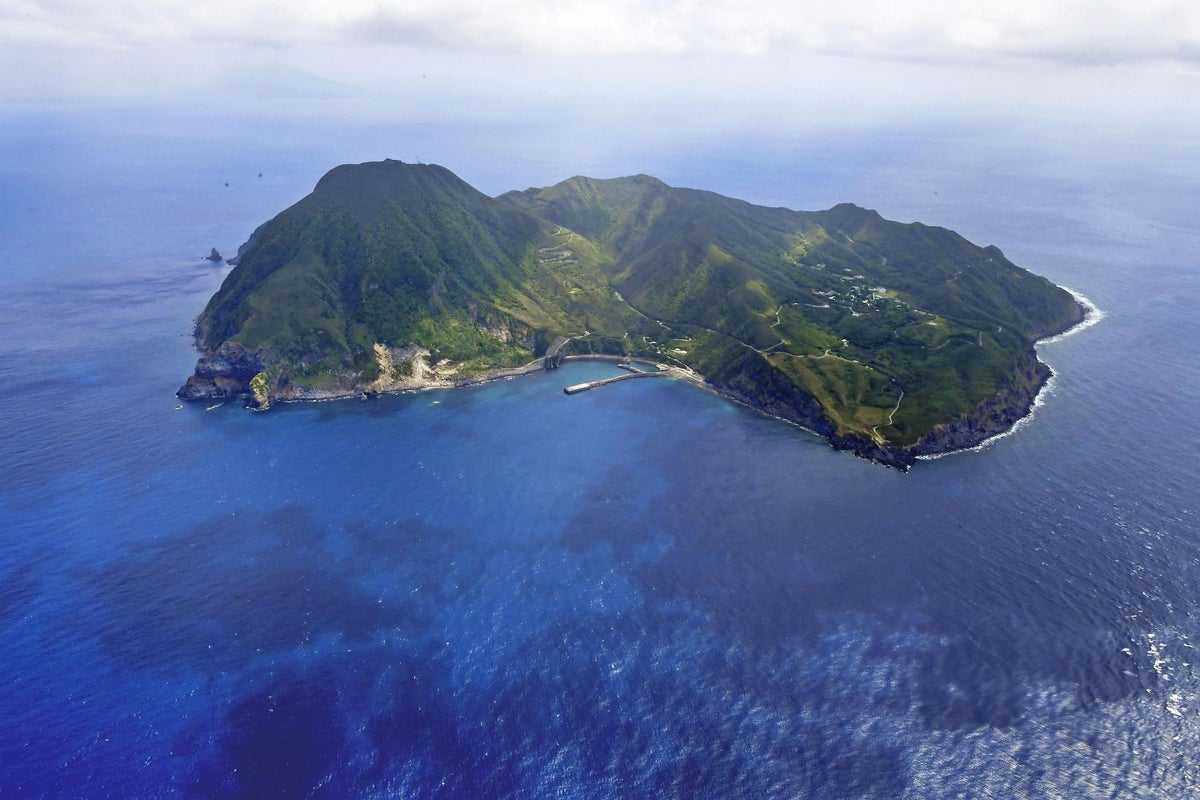Japanese authorities have evacuated a small island village after the region was jolted by over 1,000 earthquakes in less than two weeks.
Authorities issued evacuation orders on Thursday after the Akuseki Island in Kagoshima prefecture was struck by a 5.5 magnitude quake, according to the Japan Meteorological Agency. The epicentre was off the coast at a depth of about 20km.
The tremor didn’t trigger a tsunami warning, local officials said, and all residents were safe. There were no reports of any damage to infrastructure either.
The 89 residents of Toshima village departed by ship, heading to a port in Kagoshima off the southern coast of Japan where they were expected to stay in temporary accommodation. The village of Toshima comprises seven inhabited islands.
The first group of people had left from Naze Port on Amami Oshima Island, 120km south of Akuseki, at 2am local time on Friday, NKH World reported.
The ferry was scheduled to stop at all seven inhabited islands of the village and reach the Kagoshima port after 6pm local time on Friday. The combined population of the inhabited islands was 668 as of June, the Japan Times reported.
The evacuees would stay at lodging facilities arranged by the village, local reports said. Officials said the evacuation could last about a week as people from other islands in the region could also be told to temporarily leave their homes due to the ongoing seismic activity.
Akuseki is part of the Tokara Island chain south of the Kyushu region, which has been rattled by 1,031 quakes of intensity 1 or greater since 21 June.
Situated within the Pacific ‘Ring of Fire’, Japan is one of the most quake-prone countries in the world. Similar evacuations in Toshima were carried out in December 2021 after a strong earthquake rocked Akuseki.
Recent viral rumours of impending disaster stemming from a comic book prediction have dampened Japan’s tourism boom, with visitors from neighbouring regions cancelling their travel plans.
Steve Huen of Hong Kong travel agency EGL Tours blames a flurry of social media predictions tied to a manga that depicts a dream of a massive earthquake and tsunami hitting Japan and neighbouring countries in July 2025.
“The rumours have had a significant impact,” Mr Huen told Reuters, adding that his firm had seen its Japan-related business halve.
Discounts and the introduction of earthquake insurance had “prevented Japan-bound travel from dropping to zero”, he said.
Hong Kong resident Branden Choi, 28, said he was a frequent traveller to Japan but was hesitant to visit the country during July and August due to the manga prediction. “If possible, I might delay my trip and go after September,” he said.
Ryo Tatsuki, the artist behind the manga titled ‘The Future I Saw’, first published in 1999 and re-released in 2021, has tried to dampen the speculation, saying in a statement issued by her publisher that she was “not a prophet”.
The first edition of the manga warned of a major disaster in March 2011. That was the month and year a massive earthquake, tsunami and nuclear disaster struck Japan’s northeastern coast, killing thousands of people.
Some have interpreted the latest edition as predicting a catastrophic event would occur specifically on 5 July 2025, although Ms Tatsuki has denied this.

